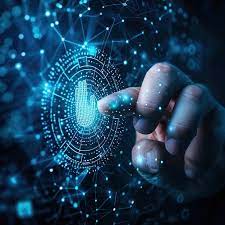Computer and Cyber Forensics Professional – Course
in Sample CategoryWhat you will learn?
Introduction about Cyber Forensics
Role of a computer forensic investigator
Types of cybercrimes
Process of Digital Forensics
About this course
The Computer and Cyber Forensics Professional – Course is designed to equip learners with the essential skills and knowledge required to investigate cybercrimes, analyze digital evidence, and secure critical data. This comprehensive program covers the principles, tools, and techniques used in modern computer forensics, ensuring participants can effectively detect, prevent, and respond to cyber threats.
Participants begin by understanding the fundamentals of cyber forensics, including the types of digital crimes, investigation processes, and legal frameworks governing digital evidence.
Recommended For
Digital Forensics Investigators
Cybersecurity Analysts and Specialists
IT Security Managers and Officers
Incident Response Team Leaders
Law Enforcement and Law Officers involved in cybercrime
Compliance and Audit Professionals
IT Risk Management Officers
Network and System Administrators handling security incidents
Data Protection Officers (DPOs)
Cybercrime Investigation Professionals
Penetration Testers and Ethical Hackers
Legal Advisors and Consultants in Cybersecurity
Security Operations Center (SOC) Professionals
Forensic Analysts in corporate or government sectors
IT Auditors and Regulatory Compliance Experts
Professionals responsible for digital evidence collection and analysis
Malware and Threat Analysis Specialists
Information Security Governance Professionals
Professionals designing or improving forensic investigation processes
Tags
Computer Forensics
Cyber Forensics
Digital Evidence Analysis
Cybersecurity Investigation
Incident Response and Handling
Digital Forensics Investigation Techniques
Malware and Threat Analysis
Network Forensics
Mobile Device Forensics
Forensic Data Recovery
Cybercrime Investigation
Security Operations Center (SOC) Forensics
Information Security Audit
Legal and Regulatory Compliance in Forensics
Digital Evidence Collection and Preservation
Forensic Tools and Technologies
Forensic Reporting and Documentation
Chain of Custody in Cyber Investigations
Evidence Analysis and Interpretation
Forensic Investigation Lifecycle
Cyber Threat Intelligence
Enterprise Forensics Practices
Incident Detection and Response
Data Breach Investigation
Electronic Discovery (e-Discovery)
Malware Analysis and Reverse Engineering
Security Operations and Forensic Readiness
Cybersecurity Governance in Forensics
Digital Forensics Best Practices
Forensic Case Management
ISO/IEC Standards for Forensics
Forensic Risk Assessment and Mitigation
Comments (0)
Cyber Forensics is the scientific process of collecting, analyzing, and preserving digital evidence from computers and networks for legal use.It covers areas like computer, mobile, cloud, and network forensics to investigate cybercrimes.It is vital in modern cybersecurity for detecting attacks, preventing future breaches, and supporting legal investigations.
Dark Web and Cybercrime Marketplace Investigation in cyber forensics involves analyzing hidden online platforms where illegal goods and services are traded to uncover evidence, trace malicious activities, and identify threat actors. It enables the collection of legally admissible digital artifacts, supports attribution, and provides actionable intelligence for incident response. These investigations strengthen information security by preventing data breaches, tracking cybercrime, and improving forensic readiness.
Mobile App and Cloud Sync Forensics is a specialized branch of computer and cyber forensics focused on investigating, preserving, and analyzing data from mobile applications and cloud-synchronized environments. It enables the recovery of evidence, reconstruction of user activity, and detection of unauthorized access or data exfiltration. This discipline strengthens cybersecurity, supports legal proceedings, and ensures comprehensive protection and accountability of digital information.
IoT and Embedded Device Forensics is a specialized branch of computer and cyber forensics focused on collecting, preserving, and analyzing data from IoT and embedded systems in a forensically sound manner. It helps investigate cyber incidents, recover critical digital evidence, and identify security vulnerabilities across connected devices. By ensuring accurate evidence recovery and supporting legal and security processes, it strengthens overall cybersecurity and operational resilience.
Artificial Intelligence (AI) and Machine Learning (ML) are transforming computer and cyber forensics by automating evidence analysis, detecting anomalies, and reconstructing digital events with high accuracy. They enhance investigative efficiency, handle large volumes of data, and identify both known and unknown cyber threats. By integrating AI and ML, forensic processes become faster, more precise, and capable of supporting proactive and intelligence-driven cybersecurity investigations.
Memory and Volatile Data Forensics enables investigators to capture and analyze critical information from a system’s active memory, providing insights unavailable through traditional disk-based methods. It helps detect stealthy, fileless attacks, reconstruct timelines, and recover encryption keys or session data for accurate attribution. By preserving real-time evidence and supporting rapid incident response, it strengthens the overall effectiveness and reliability of computer and cyber forensic investigations.
Cloud Forensics and Virtual Environment Investigations enable the secure collection, analysis, and preservation of digital evidence across cloud infrastructures and virtualized systems. They help detect intrusions, maintain data integrity, and support legal and compliance requirements through advanced forensic techniques. By enhancing investigative accuracy, scalability, and cyber resilience, these disciplines play a vital role in modern information protection and digital forensics.
Digital forensic tools and techniques are vital for uncovering, preserving, and analyzing digital evidence in a legally acceptable manner.
They help investigators trace cybercrimes, recover deleted or hidden data, and reconstruct digital events accurately.
By maintaining data integrity and authenticity, these methods ensure credibility in court proceedings.
Overall, they form the backbone of modern cybercrime investigation and digital security enforcement.
The steps of the digital forensic process are important because they ensure that evidence is collected, analyzed, and presented in a legal and reliable manner.They maintain data integrity and prevent contamination or alteration during investigation.
Emerging trends in forensic data and analysis are important because they improve accuracy, speed, and efficiency in solving complex cybercrimes.
They help investigators handle modern technologies like cloud, AI, IoT, and big data effectively.
By adopting these advancements, digital forensics ensures stronger evidence, better security, and reliable justice delivery.
Ethical responsibilities ensure that digital investigations are fair, honest, and legally valid.
They protect individuals’ privacy and maintain the credibility of evidence in court.
Following ethics builds trust, professionalism, and integrity in the field of digital forensics.
Different types of digital forensics—computer, mobile, network, cloud, memory, database, email, malware, and IoT—focus on collecting evidence from specific digital sources.
Each type plays a vital role in tracing cybercrimes, recovering lost data, and identifying attackers.
They ensure that digital evidence is accurately analyzed and legally admissible in court.
Together, they help build a complete picture of cyber incidents and strengthen cybersecurity investigations.
Digital Evidence refers to data stored or transmitted digitally that can be used as proof in cybercrime investigations.
Data Acquisition is the process of collecting and preserving this evidence without altering it.
It involves methods like live, static, logical, and physical acquisition using forensic tools such as FTK Imager or EnCase.
Proper handling ensures evidence integrity, authenticity, and legal admissibility in court.
Understanding the types of cybercrimes helps identify and prevent digital threats early.
It spreads awareness about how attacks occur and their real-world impacts.
Organizations can design better security policies and protective measures.
It builds a safer cyber environment by promoting responsible digital behavior.
A Computer Forensic Investigator collects, preserves, and analyzes digital evidence from computers and networks to uncover cybercrimes.
They identify sources of data, recover deleted or hidden files, and ensure evidence integrity for legal use.They prepare detailed forensic reports and may testify in court as expert witnesses.
Their work helps law enforcement solve cybercrimes and improves organizational cybersecurity.
Forensic Data Visualization and Timeline Reconstruction are essential techniques in computer and cyber forensics that transform complex digital evidence into visual and chronological formats, enabling clear understanding of events. These methods help investigators identify patterns, detect anomalies, and reconstruct the sequence of cyber incidents accurately. By enhancing analysis, communication, and legal documentation, they strengthen overall digital investigation, evidence integrity, and organizational cybersecurity.







